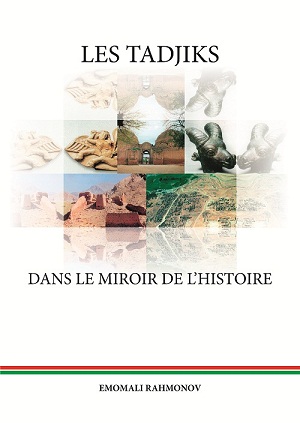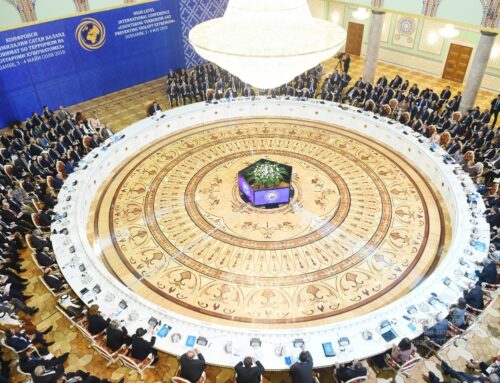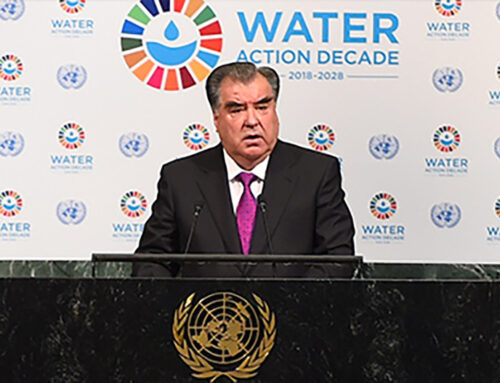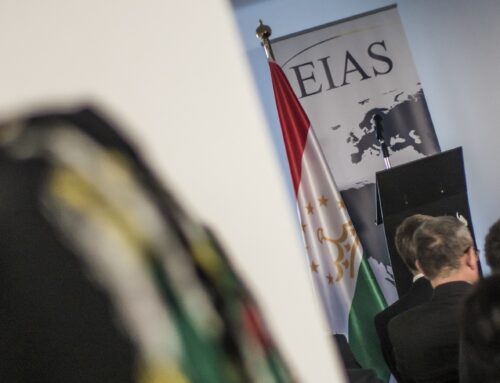Article by editor of the French edition of the book “Tajiks in the mirror of history” (Les Tadjiks dans le miroir de l’histoire)
The French edition of the book “Tajiks in the mirror of history” authored by Emomali Rahmon, President of Tajikistan, was first presented at the European Parliament in March 2014, followed by a presentation at the Royal Museums of Art and History to leading scientists of the European Union in Brussels early May. The French edition follows Russian, English, German, Arabic, Chinese and Persian editions and offers the French speaking communities in countries like Belgium, France, Luxemburg, Canada and other Francophone states of the planet an introduction to the Tajik world. Colour plates of monuments and archaeological finds illustrate the text. BMG, BigMediaGroup, in charge of lay-out and printing, produced an appealing volume that incites one to pick up and start reading!

“Les Tadjiks dans le miroir de l’histoire” is more than just another book on the history of Central Asia. It gives a very personal view on the history and identity as it is felt and experienced by the modern Tajik, whose roots lie deep in the Persianate culture and history. No one is better placed than Emomali Rahmon to know and understand the difficulties that faced the young Tajik Republic when the structural unity of the USSR dissolved. The first chapter reflects on this troubled period that gave rise to the modern Tajik Republic and that strengthened the Tajik identity. On several occasions throughout the book, the place of the Tajik Republic in the modern world is reflected upon in the light of its recent history and Emomali Rahmon discusses fundamental questions on democracy and national unity.
The book consists of two parts, the first emphasizes the cultural and mythical background of the Tajik world, the second part of the book focusses more on the Persian and Indo-European or Aryan empire building. Let us first comment on the latter. Its first chapter looks at modern day Tajikistan in the light of the 20th and 21st century events, the fall of the USSR and the civil war. Mixing historical facts with first hand experiences and personal views and events, it provides the reader a very personal and emotional approach by Emomali Rahmon. At the same time, the reader is confronted with a strong awareness of ancient history, sustained by the educational system, that is experienced as a constant political and cultural reference for the modern state. Three chapters on early history, discussing respectively the Achaemenid empire, the Seleucid empire and the Turanian states, look specifically at their political and administrative organisation.
The first part of the book focuses on the cultural background and history of the Tajiks. It sets off with a short discussion of the famous Silk Road, a label which is mostly used from the Parthian period onwards although the trade along these routes started much earlier. Already in the third millennium, Badakhshan provided Mesopotamia and Egypt with lapis lazuli, illustrating the central position of Tajikistan on a network of trade routes. The ongoing construction of modern roads aiming to link Chinese territories with Central Asian and Middle Eastern states, wants to reposition Tajikistan as a major transport hub within the trade network. Like the “Silk Road”, the Vakhsh River has a special significance. Cutting through the mountains, large Hellenistic sites with temples and fortifications were installed along its banks. The famous Oxus treasure, now kept at the British Museum in London, is only one of the many treasures that testifies to the developed society that populated this part of Asia. It is also in these regions that the origins of the Avesta and the development of the Zoroastrian faith is looked for. Although most of the sacred texts were only written down in the Sasanian or early Islamic era, they reflect customs and beliefs that are considerably older. The prophet Zoroaster or Zarathustra, who is thought to have canonized many of these beliefs, probably lived in the 7th century BC. Again, the reader is not merely presented with facts and figures but is told how Emomali Rahmon became acquainted with this historical background, how he encountered scientific papers in journals that were delivered at the kolkhoz and how he became fascinated by them.
From reading about Zoroastrianism, it is but a small step to the works of Islamic historians, scientists and poets like al-Biruni and al-Masudi. One of the most influential works remains of course the Shah Nameh, written by Abulqasim Ferdowsi (c. 940-1020 AD) who describes the history of the Persian world from its creation to the overthrowing of the Sassanians by the Arabs in the middle of the 7th century. Ferdowsi was inspired by history and combined earlier historical works, mythological tales, elements of the Avesta and other Zoroastrian scriptures into an epic poem of some 60 000 rhyming couplets. Whereas the more recent periods he describes are often historically accurate, his comments on the earliest royal dynasties are controversial. Emomali Rahmon supports historians like Y. Yakubov who are convinced of the historical core of some of these myths and early dynasties which are linked to early Tajik origins.
The Shah Nameh is the symbol of a common Persianate heritage, and like the common language and culture, it explains the sentiment that Emomali Rahmon describes when setting foot on Iranian soil. The Tajik history is often defined by the Samanid dynasty but it is a part of the extensive Persianate culture with its much older roots. Emomali Rahmon offers the reader a fascinating insight on how the Tajik people look at their own past and their origins, hence the title “in the mirror of history”. The book makes fascinating reading for anyone who wants to understand the Tajik mind and his views on diverse concepts like national identity and economic development. The author offers the outsider a priviliged glimpse of a different world. It is a must for any politician, businessman, scholar or simply any visitor who is interested in the Persianate or Central Asian world. It explains how traditions and historic concepts very much continue to shape much of Tajikistan’s modern history.
Prof. Dr. Bruno Overlaet of Ghent University and the Royal Museums of Art and History of the Kingdom of Belgium




